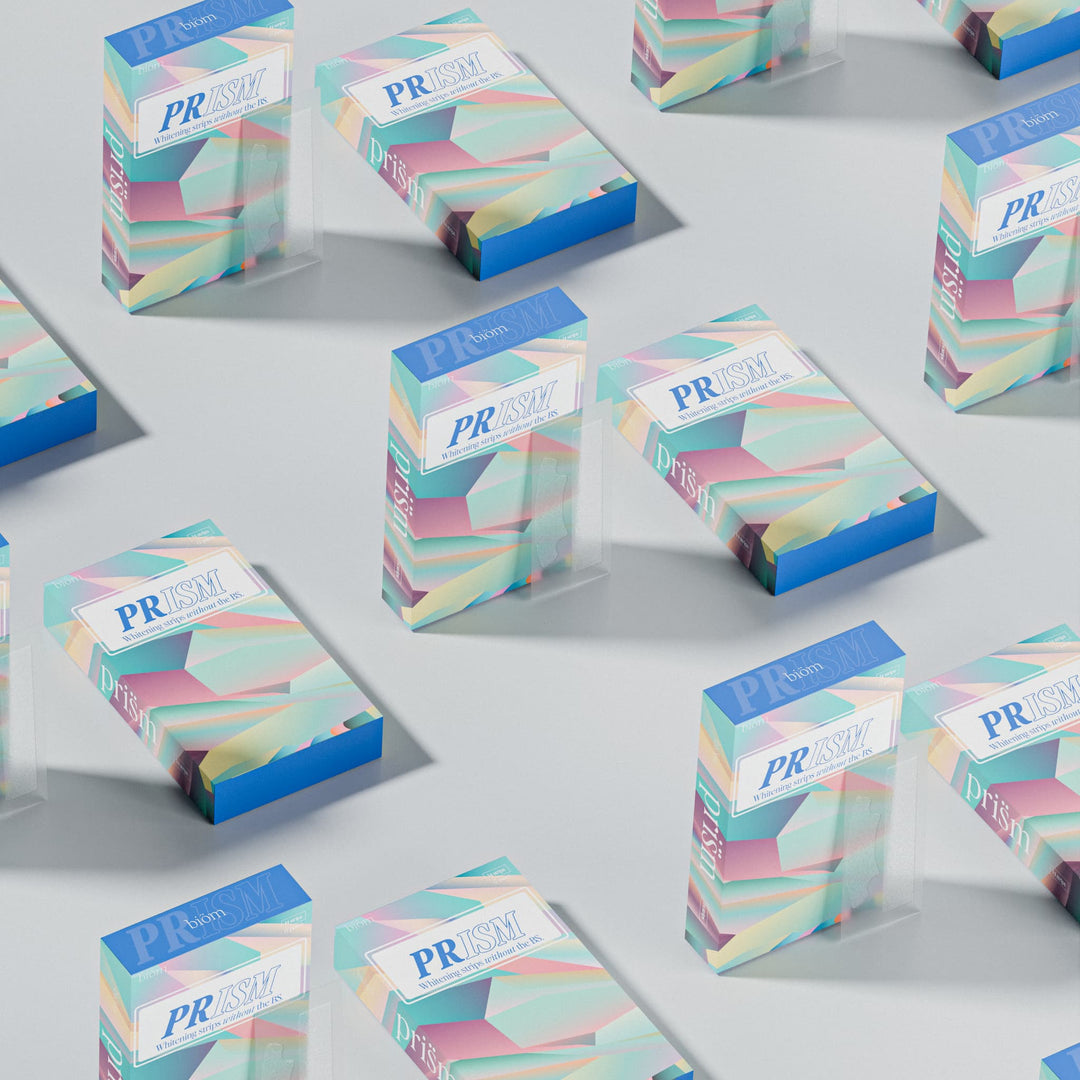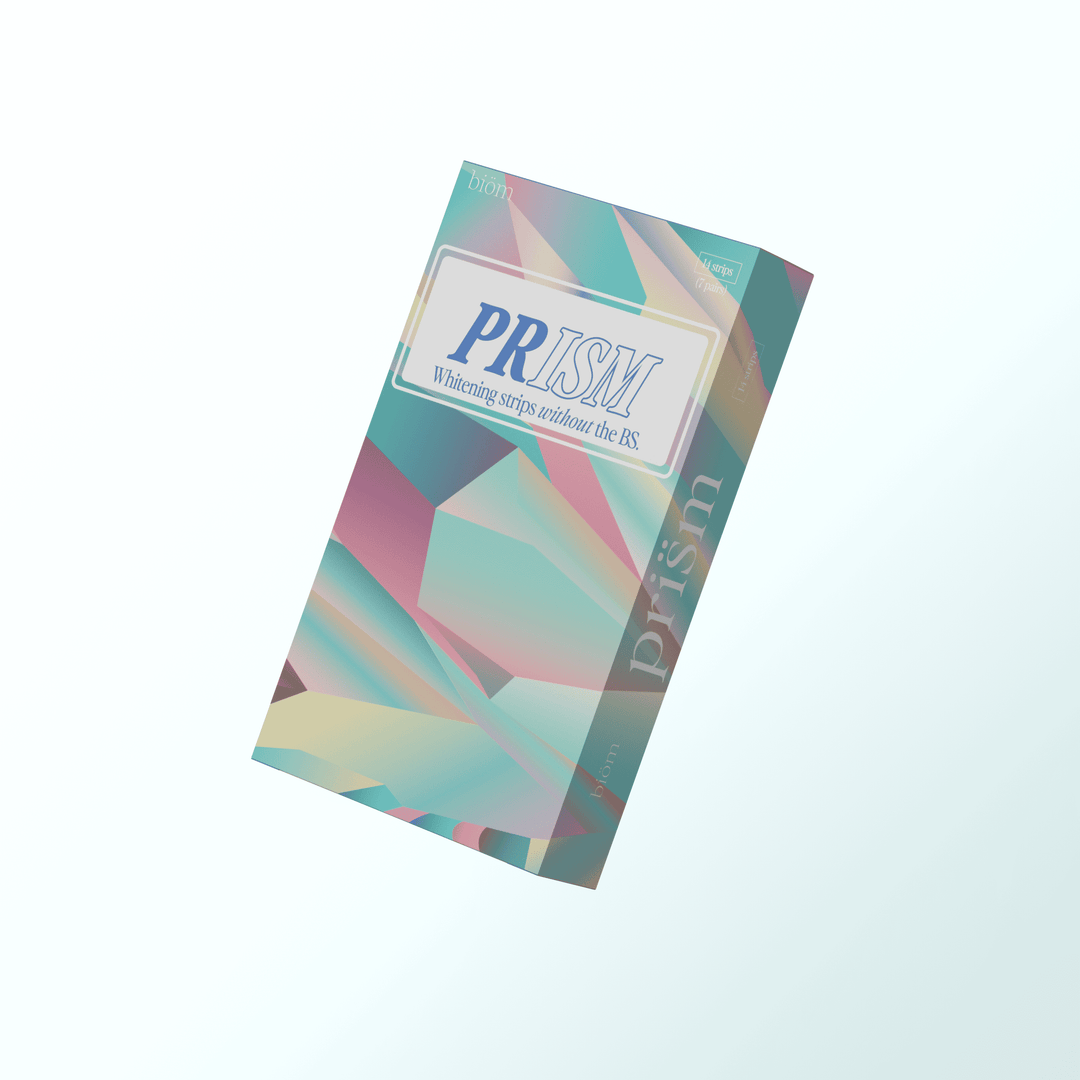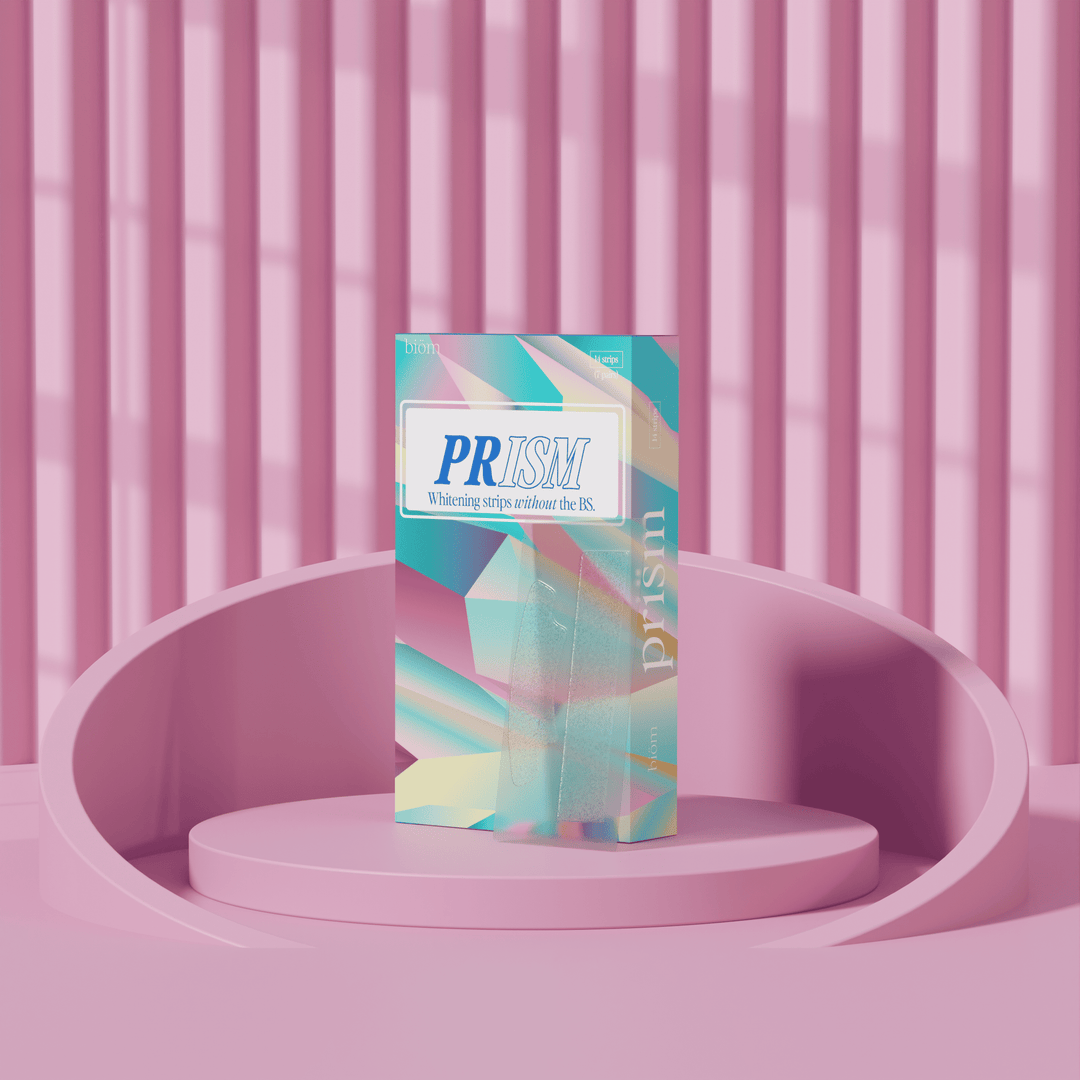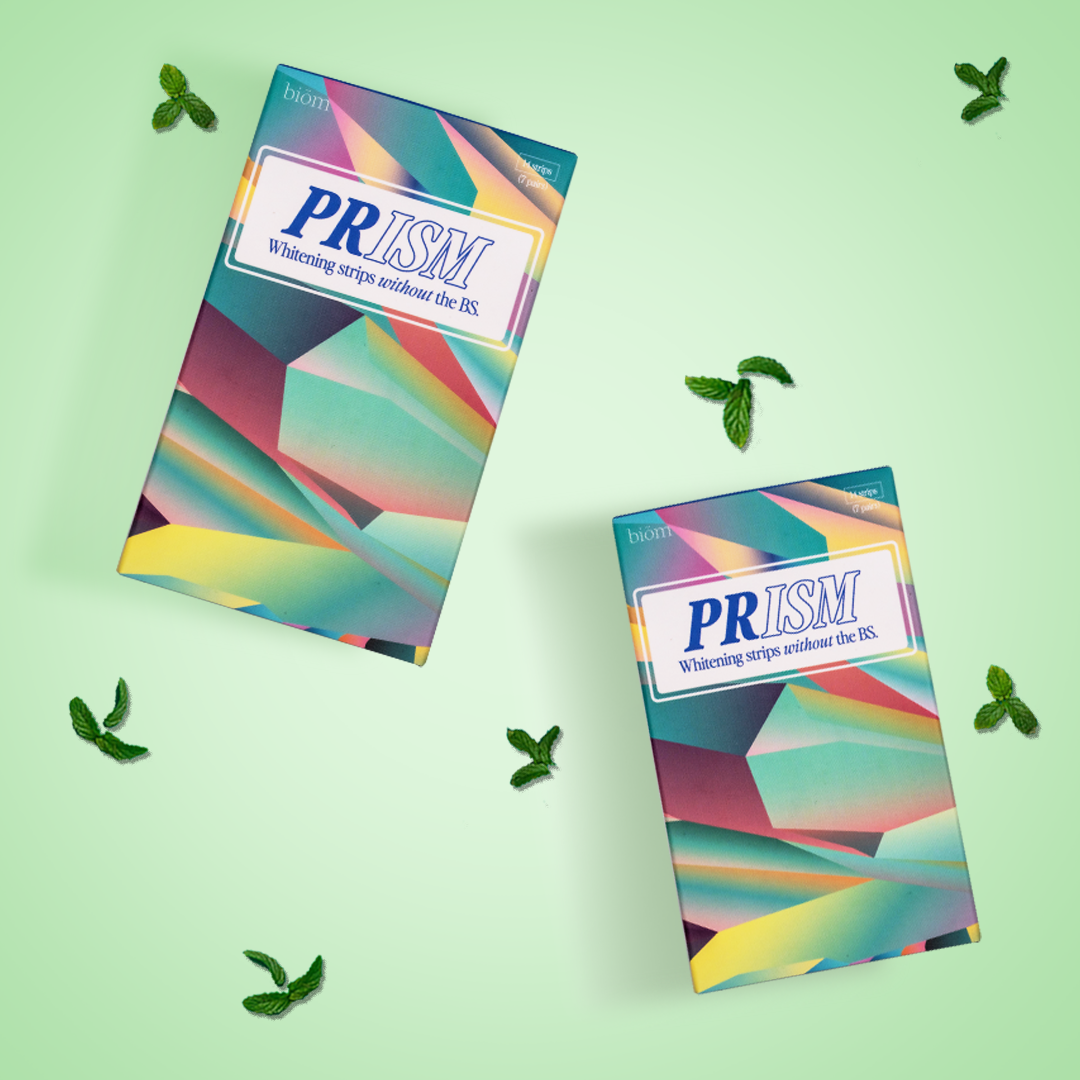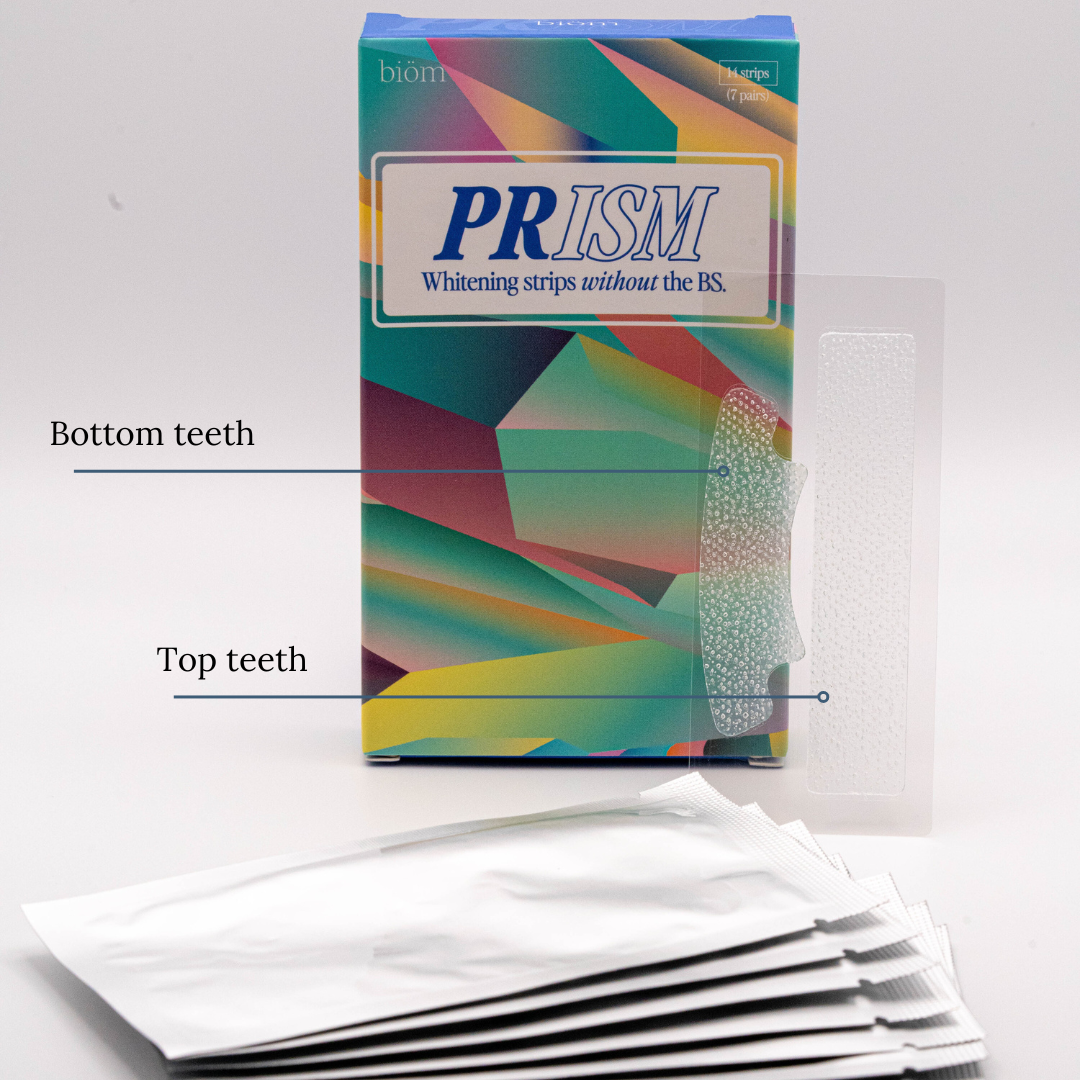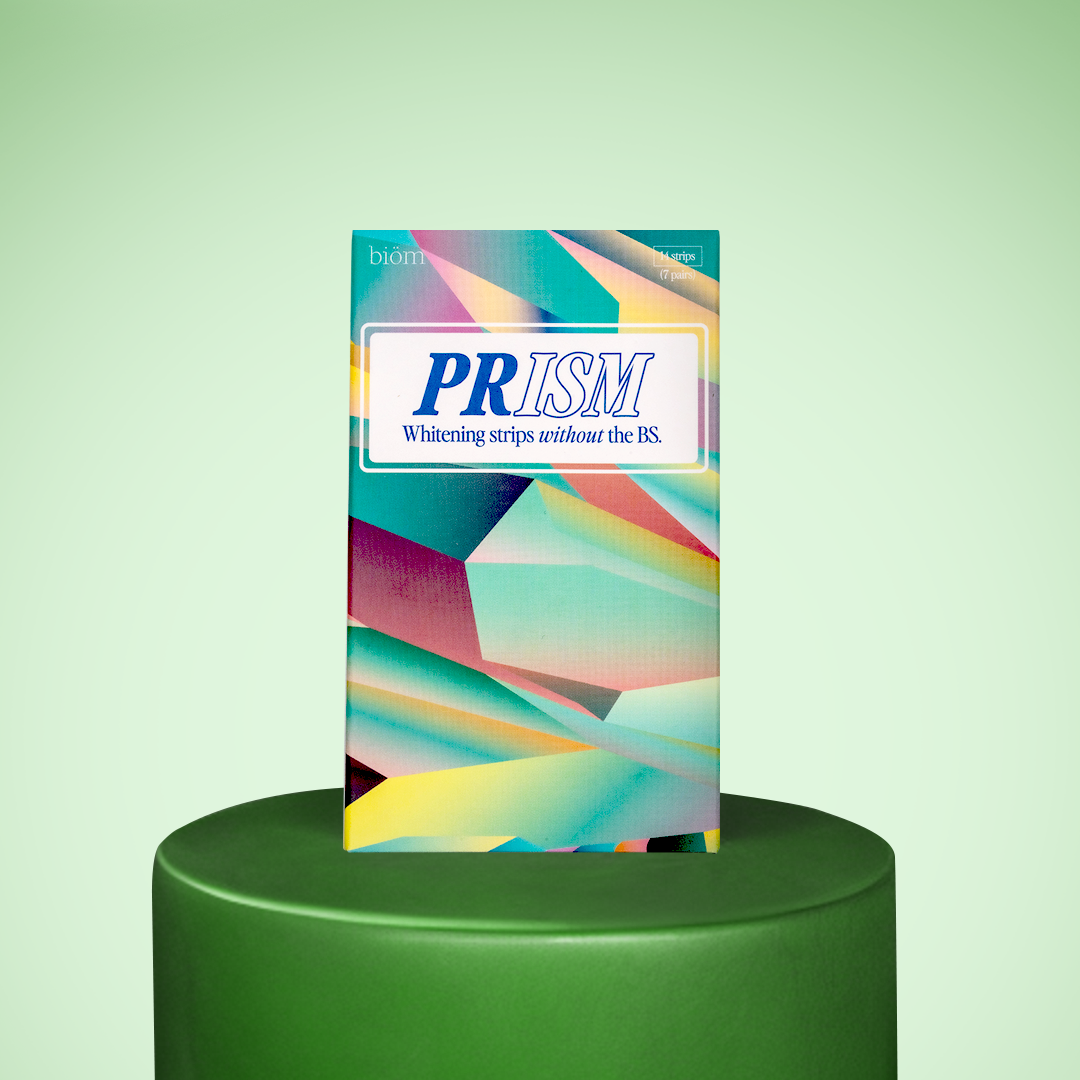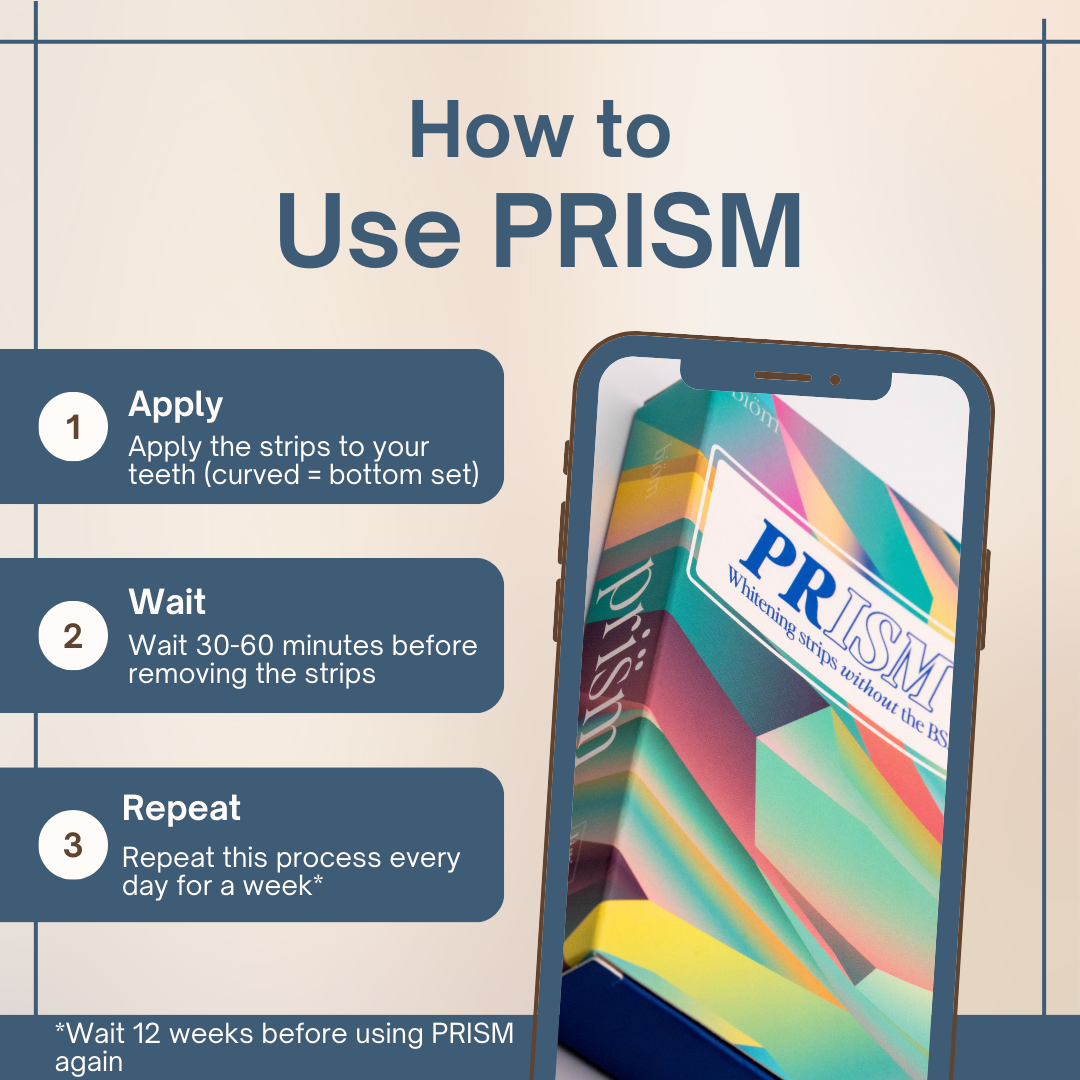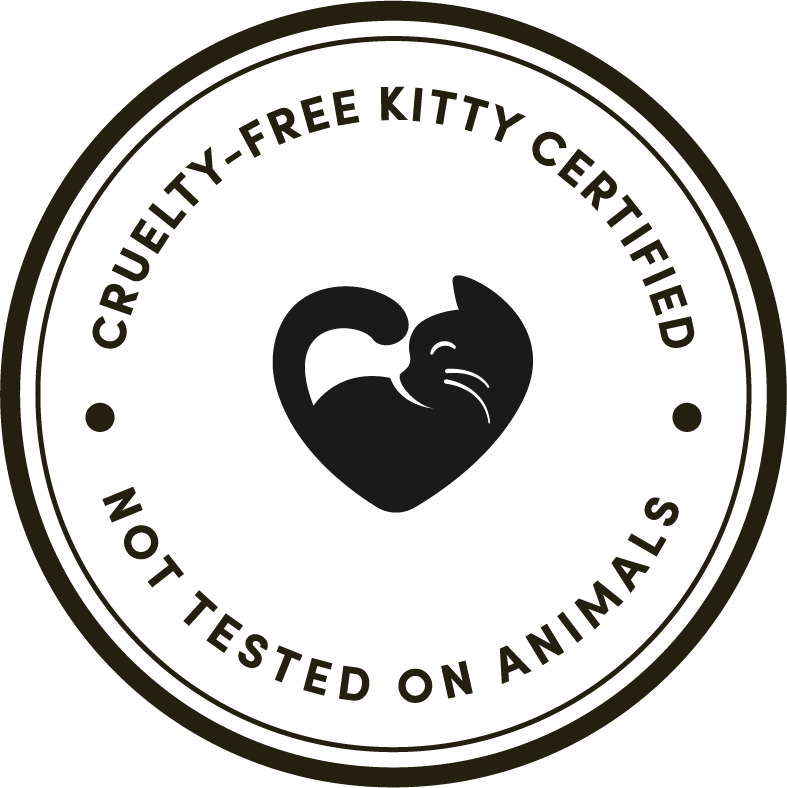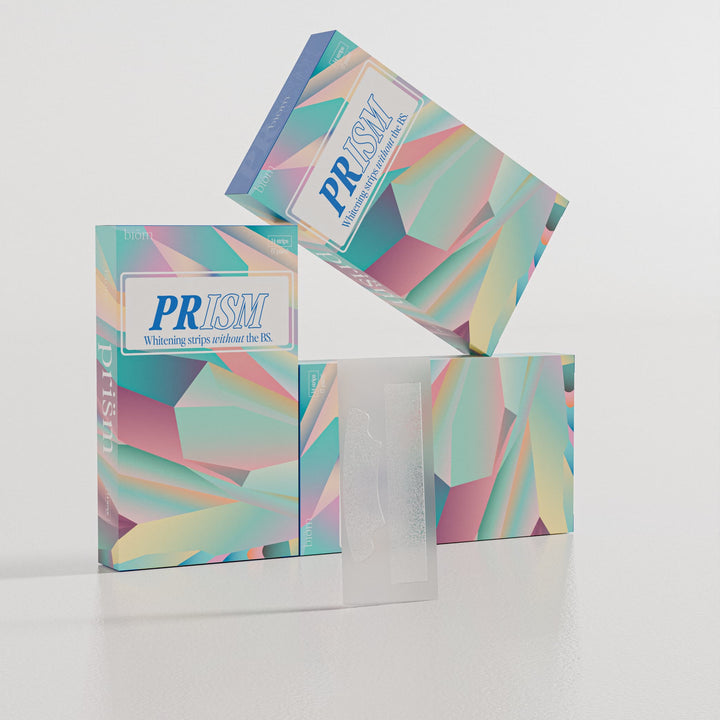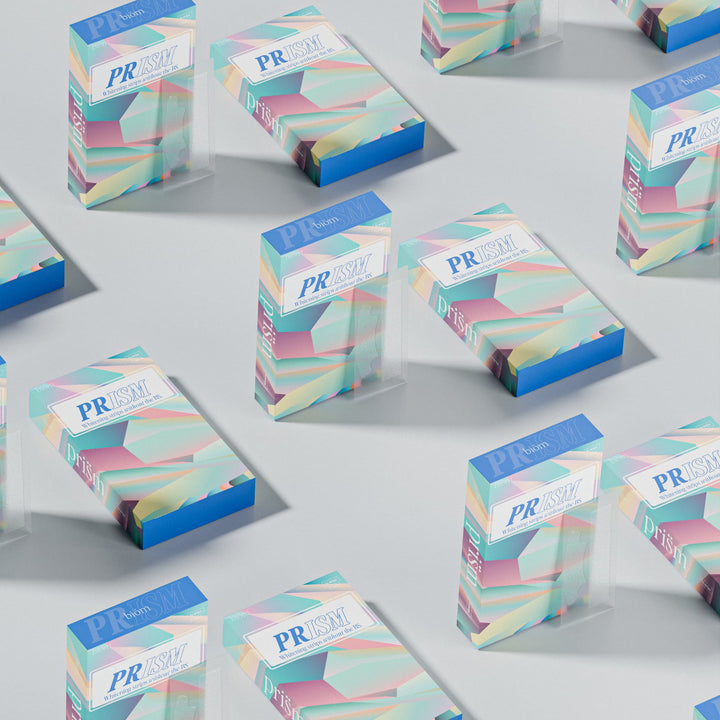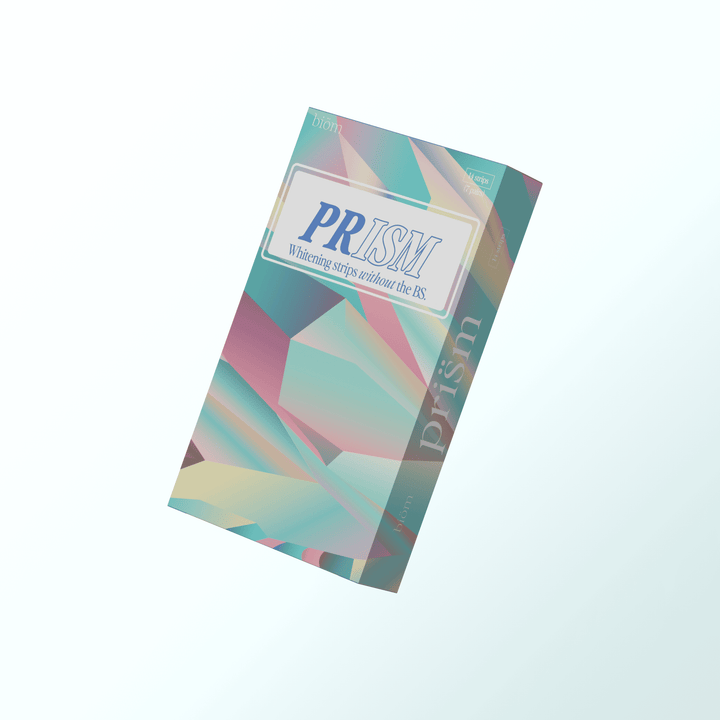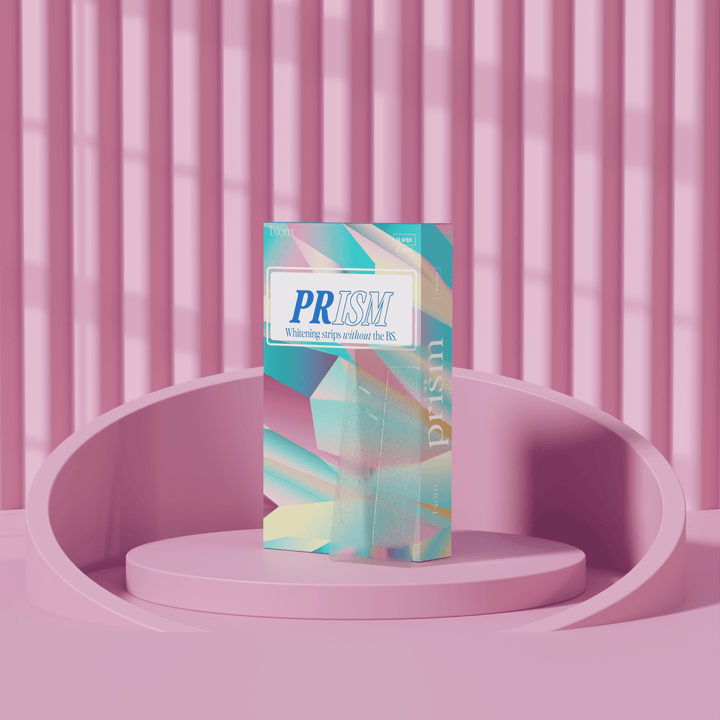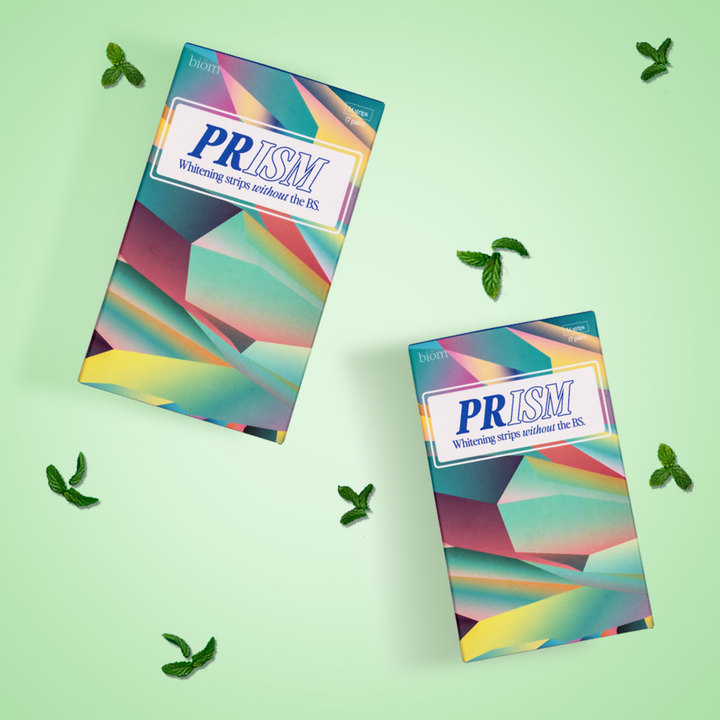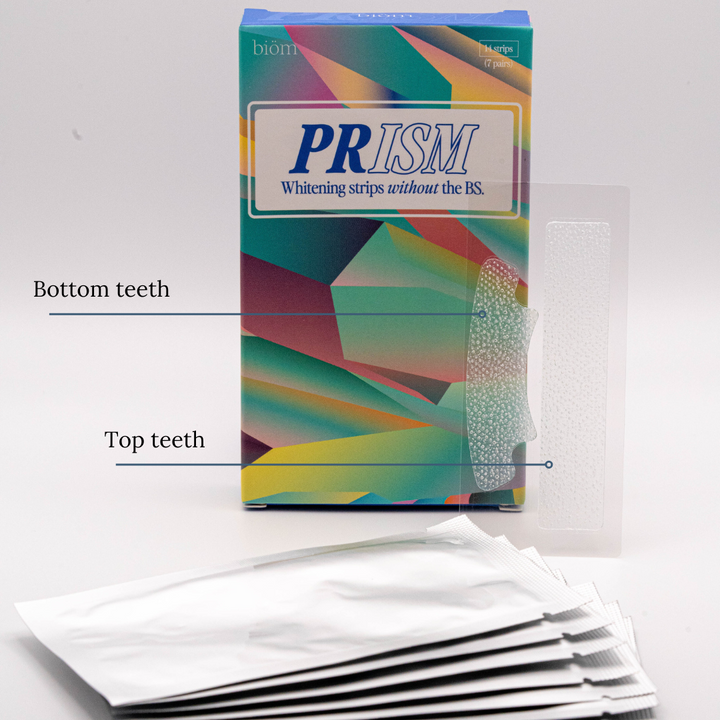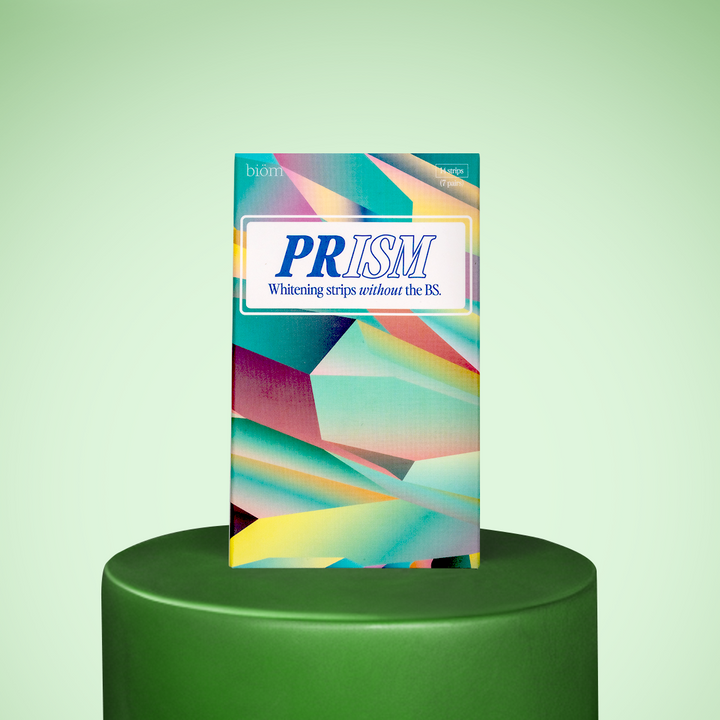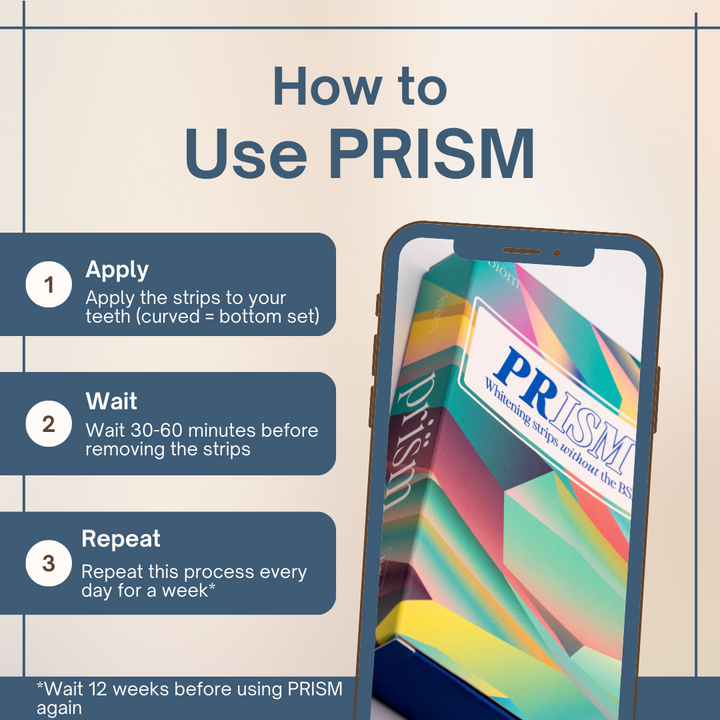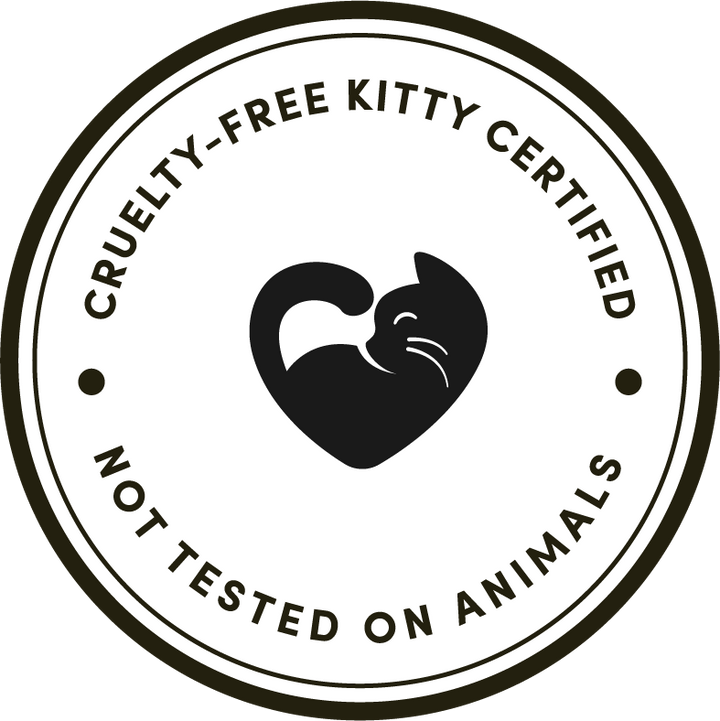How to Prevent Teeth Staining
To prevent teeth staining, you should reduce your consumption of drinks like red wine, tea and coffee and maintain good daily oral hygiene practices.
The longer you leave food sitting on your teeth, the more likely it for tooth discoloration to develop. Therefore, you should brush your teeth twice per day to reduce the chances of staining.
If you are already experiencing stained teeth, you can consider using whitening strips formulated with hydrogen peroxide.
This article will explain everything you need to know about how to prevent teeth staining and reducing teeth discoloration.
Types of Teeth Stains and Teeth Discoloration
 There are two main types of tooth stains, intrinsic stains and extrinsic stains:
There are two main types of tooth stains, intrinsic stains and extrinsic stains:
-
Extrinsic stains are stains found in the outer layer of your teeth
-
Intrinsic stains are stains found deep within the tooth itself
Both types of tooth stains have different causes and treatment options.
Extrinsic Teeth Stains
Extrinsic stains can be thought of as surface stains.
This type of tooth stain is caused by outside dietary and lifestyle factors, such as drinking tea or coffee.
Thankfully, extrinsic tooth discoloration can be removed more easily than intrinsic stains.
Intrinsic Stains
Intrinsic tooth stains are found within the tooth itself rather than the surface-level enamel.
These stains can be attributed to too much fluoride consumption or antibiotics like tetracycline which is used during pregnancy.
Tooth Staining Causes
 Stains on your teeth can have a number of causes from dietary and lifestyle factors.
Stains on your teeth can have a number of causes from dietary and lifestyle factors.
Think of the most common perpetrators of tooth staining:
-
Coffee
-
Tea
What do they all have in common?
They all have chromogens which interact with your enamel rods. Over time, this causes optical changes in the color of your enamel leading to the development of a yellow and brown teeth.
Further, certain people may be genetically more prone to staining then others.
Food and Drink
Ultimately our diet and habits are what lead to teeth staining. Food items such as
-
Tea
-
Coffee
-
Turmeric
-
Red wine
-
Berries
-
Fruit juices
-
Tomato-based sauces
-
Energy drinks
and more will cause your teeth to stain over time.
Poor Dental Hygiene
Keeping your teeth clean and free from plaque will decrease the likelihood of developing tooth discoloration and age related teeth stains.
The longer we leave food debris to collect on our teeth, the more our teeth will accumulate chromogens which cause tooth discoloration over time. In fact, you can decrease the frequency which which you need to use teeth whitening products by maintaining proper oral hygiene.
Our tooth enamel is a very hard substance, but it can accumulate stain particles from food through microscopic pores in the teeth. These deep stains are very difficult to get rid of once they accumulate.
Therefore, it is also recommended to have regular dental cleanings for optimal plaque control and proper oral hygiene.
Plaque Buildup
Plaque buildup will expose the tooth enamel to food particles and, over time, will lead to discolored teeth and tooth decay.
Poor dental hygiene will make this happen faster, but some people accumulate dental plaque faster than others.
The best way to remove deep stains is by preventing them through proper oral hygiene and elimination of plaque.
Smoking
Smoking is one of the top causes of stained teeth.
Nicotine is one of many stain causing particles even though it is tiny and colorless. It gets trapped inside the tooth enamel. When this happens, the teeth get stained because the nicotine turns brown and yellow when exposed to oxygen from the air.
Quitting smoking is a great way to prevent those pesky stains that build up on our teeth.
Other Tobacco Products
Chewing tobacco is also a habit that leads to tooth stains.
The tobacco leaf has tannins that interact with the saliva, and when this touches the tooth surface leads to tooth discoloration.
Chewing tobacco should not be overlooked when trying to avoid or eliminate tooth stains.
Dry Mouth
Dry mouth is an issue that often goes unnoticed and can cause a variety of oral health issues, including teeth stains.
Our saliva provides nourishment to the oral cavity and prevents bacterial overgrowth. When your mouth is dry, this causes bad bacteria to grow, causing more plaque buildup.
If the dry mouth becomes a chronic issue, it is not unusual to notice a stark decrease in the quality of your tooth color.
How to Remove Stains from Teeth

There are a few common methods to remove staining and whiten teeth:
-
Brushing: the most basic and superficial method to remove teeth stains
-
Dental cleaning: an ultrasonic cleaning machine at your local dentist's office
-
Hydrogen peroxide: commonly found in whitening products
Please note that while whitening toothpaste is not bad per se, dentists recommend that children should not use whitening toothpaste as it can be damaging to their developing teeth.
Dental Cleanings
The ultrasonic cleaning machine at a dental cleaning visit will remove stains more effectively than toothbrushing but still in a superficial way.
Hydrogen Peroxide
Hydrogen peroxide has many uses, but it is particularly useful in dental materials like whitening strips.
Peroxide removes stain via chemistry rather than abrasion by getting inside the nooks and crannies of the enamel. It is one of the oldest and most studied ingredients for whitening teeth, and often found in many cosmetic dentistry settings.
Hydrogen peroxide can also be found in the form of carbamide peroxide which usually comes in a gel form as it needs to be directly applied to the teeth. Many times, custom trays are made for patients to create a form-fitting solution to achieve at home treatments for whiter teeth.
Using hydrogen peroxide for teeth whitening is a great option whether its with a dental professional or for use at home whitening. Many people report a noticeable effect and whiter teeth after just one use.
Hydrogen peroxide is often used as an ingredient for whitening toothpaste but at a much lower concentration that what is used with whitening gel or in office treatment.
Summary: Types of Teeth Discoloration and Solutions

There are two common types of tooth stains: intrinsic stains and extrinsic stains. While extrinsic stains can be thought of as surface stains, intrinsic stains exist deep within your teeth and can be more difficult to remove.
The best way to prevent tooth discoloration is by practicing good oral hygiene and reducing your consumption of goods like red wine and coffee.
However, if you are already experiencing teeth stains, you can consider using whitening strips with hydrogen peroxide or visiting your local dentist for an ultrasonic cleaning.
Frequently Asked Questions
What can I do to prevent teeth staining?
To prevent teeth staining, you can limit the consumption of stain-causing foods, quit smoking, use a straw, rinse after eating, and, most importantly, brush your teeth daily. Additionally, you can use whitening strips for a week. Plus, it is important to consult with your dentist for personalized advice and recommendations based on your specific dental needs.
What's the best way to eliminate teeth stains?
The best way to prevent teeth stains is to use teeth whitening products like PRISM Whitening Strips for a week and incorporate nano hydroxyapatite toothpaste tablets into your daily routine. This can help prevent teeth staining and is safer for everyday use compared to using whitening toothpaste.
What should I do if I already have stained teeth?
If you already have stained teeth, make sure you're practicing good oral hygiene by brushing and flossing regularly. You can also use whitening strips at home to reduce the staining. Additionally, you may explore professional teeth-whitening options or consult with your dentist for personalized advice.
What are the two main types of tooth stains?
The two main types of tooth stains are intrinsic stains, which occur within the tooth structure, and extrinsic stains, which affect the tooth's surface. Extrinsic tooth stains are typically caused by external factors such as consuming pigmented foods and beverages, tobacco use, and inadequate oral hygiene practices that lead to the buildup of plaque and tartar on the tooth surfaces.
What causes extrinsic tooth stains?
Extrinsic tooth stains are primarily caused by external factors such as the consumption of pigmented foods and beverages (like coffee, tea, and red wine), tobacco use, and poor oral hygiene practices leading to the buildup of plaque and tartar on the tooth surfaces. These external agents can result in discoloration on the outer layer of the teeth.



